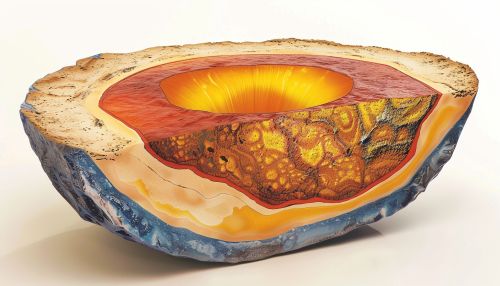Earth's density
Introduction
Earth's density, a fundamental physical property of our planet, is defined as the mass per unit volume. It is an essential parameter in many geological and geophysical equations, providing insights into the planet's internal structure, composition, and tectonic processes. The average density of Earth is approximately 5.52 grams per cubic centimeter (g/cm³), but this value varies significantly depending on the specific location and depth beneath the surface. This article delves into the intricacies of Earth's density, its calculation, variations, and implications.
Calculation of Earth's Density
The calculation of Earth's density involves the measurement of the planet's mass and volume. The mass of Earth is determined through gravitational interactions with other celestial bodies, primarily the Moon, while the volume is calculated from the planet's shape and size. The density is then obtained by dividing the mass by the volume. However, this provides only an average value, as Earth's density varies with depth and location due to differences in the composition and pressure conditions.


Variations in Earth's Density
Earth's density is not uniform but varies with depth, reflecting changes in temperature, pressure, and composition. The planet can be divided into several layers based on these variations: the crust, mantle, outer core, and inner core.
Crust
The crust is the outermost layer of the Earth, with an average density of about 2.7 g/cm³. It is composed primarily of silicate rocks, such as granite and basalt. The crust's density is lower than the average Earth density due to its composition and relatively low pressure.
Mantle
Beneath the crust lies the mantle, which extends to a depth of about 2,900 kilometers. The mantle is denser than the crust, with a density ranging from 3.3 to 5.7 g/cm³. This increase in density is due to the higher pressure and the presence of denser rocks, such as peridotite and eclogite.
Outer Core
The outer core, extending from the mantle to a depth of about 5,150 kilometers, is composed primarily of liquid iron and nickel. Its density ranges from 9.9 to 12.2 g/cm³, reflecting the increased pressure and the high density of these metals.
Inner Core
The inner core, the innermost layer of the Earth, extends from the outer core to the planet's center. It is composed of solid iron and nickel and has a density between 12.8 and 13.1 g/cm³. The inner core's high density is due to the extreme pressure at the Earth's center.
Implications of Earth's Density
The variations in Earth's density have significant implications for the understanding of the planet's internal structure and dynamics. They provide evidence for the differentiation of the Earth into layers, with denser materials sinking towards the center during the planet's formation. The density variations also influence the propagation of seismic waves, allowing scientists to study the Earth's interior through seismology. Furthermore, the density of Earth plays a crucial role in the planet's gravity, atmosphere, and magnetic field.
